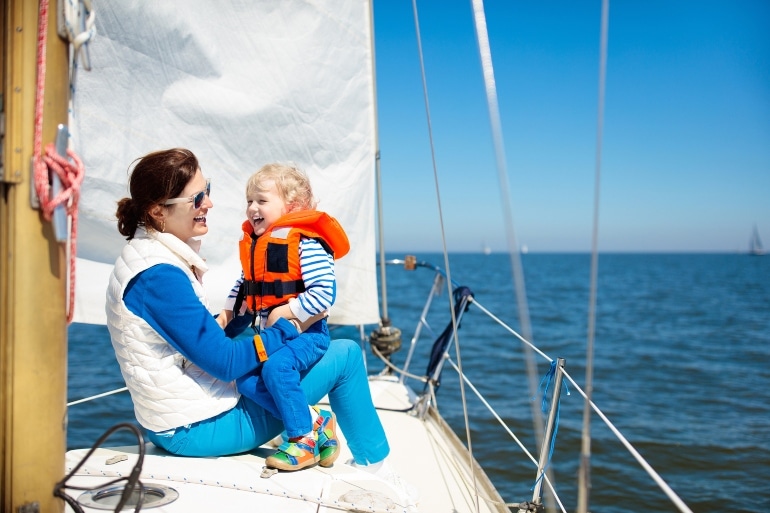5 Michigan Life Jacket Laws to Know This Summer
Many boaters believe life jackets are unnecessary unless they’re experiencing rough water or threatening weather conditions. However, half of all fatal boating accidents happen in calm water. And, in most cases, the victims were not wearing life jackets. Some people find life jackets, also called personal flotation devices (PFDs), too bulky or bothersome to wear. But, because accidents happen quickly, water safety experts agree that wearing a PFDs can save your life. In addition to choosing the right kind of PFD, it’s important to know how and when to use them. Here is an overview of the current Michigan life jacket laws.
Do You Have a Case?Michigan life jacket laws
Some of these laws were established by the U.S. Coast Guard, while others are specific to the state of Michigan. If you will be operating a boat in another state, it’s advisable to check the boating and life jacket laws for your destination(s).
The following rules apply to boaters in Michigan waterways:
- All vessels must carry at least one USCG-approved (U.S. Coast Guard) Type I, II, or III PDF for each person on board. This rule also applies to anyone who is being towed, such as a water-skier.
- These life jackets must be the proper size for each person on board or being towed. Sizing for PFDs is based on body weight and chest size.
- All children under 6 must wear a USCG-approved Type I or II PFD when riding on the open deck of any vessel that is underway.
- Vessels less than 16 feet long, including canoes or kayaks, must have either a wearable PFD (Type I, II or III) or a throwable PFD (Type IV) for each person on board.
- In addition, vessels 16 feet or longer must have one readily accessible USCG-approved throwable device.
- Each person riding on a PWC (personal watercraft such as a jet-ski), or being towed behind a PWC or other vessel, must wear a USCG-approved Type I, II or III PFD.
- Inflatable PFDs are not allowed for anyone riding on a PWC or being towed behind a PWC or other vessel.
- All PFDs must be in good and serviceable condition.
- When not being worn, PFDs must be properly stowed and readily accessible.
Choosing the right life jacket
Life jackets come in a variety of styles and sizes for people of all ages. In addition to life jackets for boating and water sports, there are specially-designed PFDs for fishing and waterfowl hunting.
Here is a guide to the most common types of PFDs:
Type I
These off-shore, highly visible life jackets are best for open, rough or remote waters where rescuers may take a while to arrive.
Type I PFDs have excellent buoyancy and flotation and will turn most unconscious wearers face-up in the water.
Type II
These near-shore vests are recommended for calm, inland water where rescuers are likely to arrive quickly.
While Type II PFDs will turn some unconscious wearers face-up in the water, they don’t accomplish this as effectively as Type 1 devices.
Type III
These wearable flotation aids are available as vests or full-sleeved jackets. They are best for calm, inland water or situations where rescue is likely to be fast.
They are comfortable and provide freedom of movement for those participating in active water sports.
However, they will not turn most unconscious users face up, and are not recommended for extended survival in rough water.
Type IV
These throwable rings, cushions, and buoys are intended to be thrown to someone in distress. They are most effective in calm, inland water with heavy boat traffic, where help is readily available.
While they make a good back-up for wearable PFDs, they are not meant for unconscious victims, non-swimmers or children.
Other life jacket safety tips
- Make sure to purchase life jackets that are the right size for you and your passengers.
- Children should not wear adult-sized life jackets. To be effective, a life jacket should fit snugly enough to keep the child’s chin or ears from slipping through.
- Test the life jackets on your boat for wear and buoyancy at least once a year.
- Discard and replace all PFDs that are faded or leaky.
- Keep a life jacket on when canoeing, kayaking or whitewater rafting.
- Although it’s not required by law, wearing a PFD whenever you’re in a moving watercraft is the safest option.
Michigan life jacket laws are complicated, but finding the right lawyer is simple.
Call 1-800-CALL-SAM today for a free no-obligation consultation.
Do You Have a Case?Sources:
HAVE YOU BEEN INJURED?
Get The Bernstein Advantage® today!
Free. Simple. Quick.


